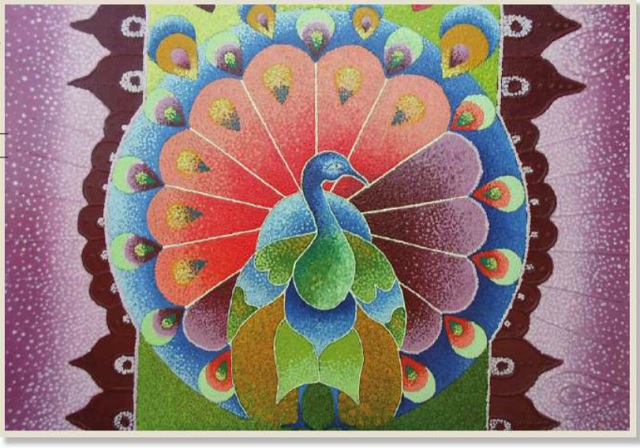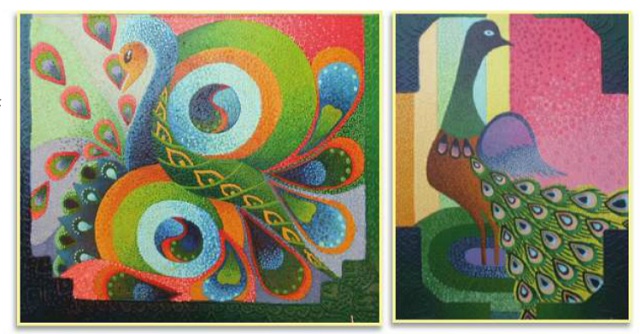
Roshani Madina Siliban is a Uganda-Indian artist who has been actively practicing painting since 2014 when she graduated with a diploma in Industrial Art and Design from the Young Men’s Christian Association (YMCA) in Kampala Uganda, writes Nathan Kiwere.
Her specialty is painting and textile design. She is likely more inclined to her Ugandan roots, having been born and bred in the Ugandan traditions and yet she is not lost on her Indian ancestry. This duo-ethnicity has caught her in a delicate balancing act between two different artistic accents and her themes and technical approaches can attest to an attempt at appeasing her double identity through her art. `
Roshani’s mother hails from the Western Uganda district of Kanungu, right at the foot of Bwindi Impenetrable Forest National Park, reputed for its great diversity of wildlife. Roshani has had several stints living in this environment with her mother, which has impacted on her thematic inspirations as a painter inclined towards wildlife. Although many of her subjects may not necessarily be found among the species in Bwindi, she is fast aligning her art around bird life.
She seems to have a special spot for the peacock, arguably the most beautiful bird on earth. Its majestic array of dazzling colours spread all over its feathers is the embodiment of beauty that is unparalleled. Roshani is heavily influenced by this bird, which is evidenced in her portrayal of the peacock in all its wealth and diversity.
In some instances she paints the bird itself generously dominating the picture plain while in other case she simply employs the colourful hues of the bird to create patterns in her works. There has not yet been any other noticeable subject of inspiration used by Roshani in her emerging career as the pudding appears to still be in the works.

In her aesthetic approach Roshani has so far adopted patterned techniques in her paintings that can easily be traced to her Indian roots, notably the Mehndi designs. She mixes and matches the patterns with her subject matter to create a hybrid aesthetic between the two cultures. There are many variations and types of Mehndi designs, such as Arabic, Indian, and Pakistani Mehndi.
Women usually apply variations of henna or mehndi design patterns on their hands and feet. One of the most manifest attributes in Roshani’s work is the symmetrical balance in most of her works, which she achieves by arranging elements on either side of the centre of her compositions in an equal weighted manner.
In some of the works, you can easily imagine that if a line was drawn down the middle of it, the left side would be virtually identical to the right. This formality of balance is quite unusual in Uganda’s aesthetic sensibilities as most art academies will usually emphasise the use of asymmetrical balance in order to create variety. Moreover, this may not be difficult to decode as for the case of Roshani who has done training as a textile designer punctuated by her affinity to the Mehndi traditions.
Whether Roshani seeks to establish herself as a Uganda artist with an Indian artistic tinge or she is simply in the ongoing struggle to find her niche in the midst of the sea of possibilities is for her to discover. What we can assume, however, is that one way or another Roshani will need to locate and define herself in the world of art that increasingly pays attention to the artist’s signature as much as the content of the work.
****
editor@independent.co.ug
 The Independent Uganda: You get the Truth we Pay the Price
The Independent Uganda: You get the Truth we Pay the Price


